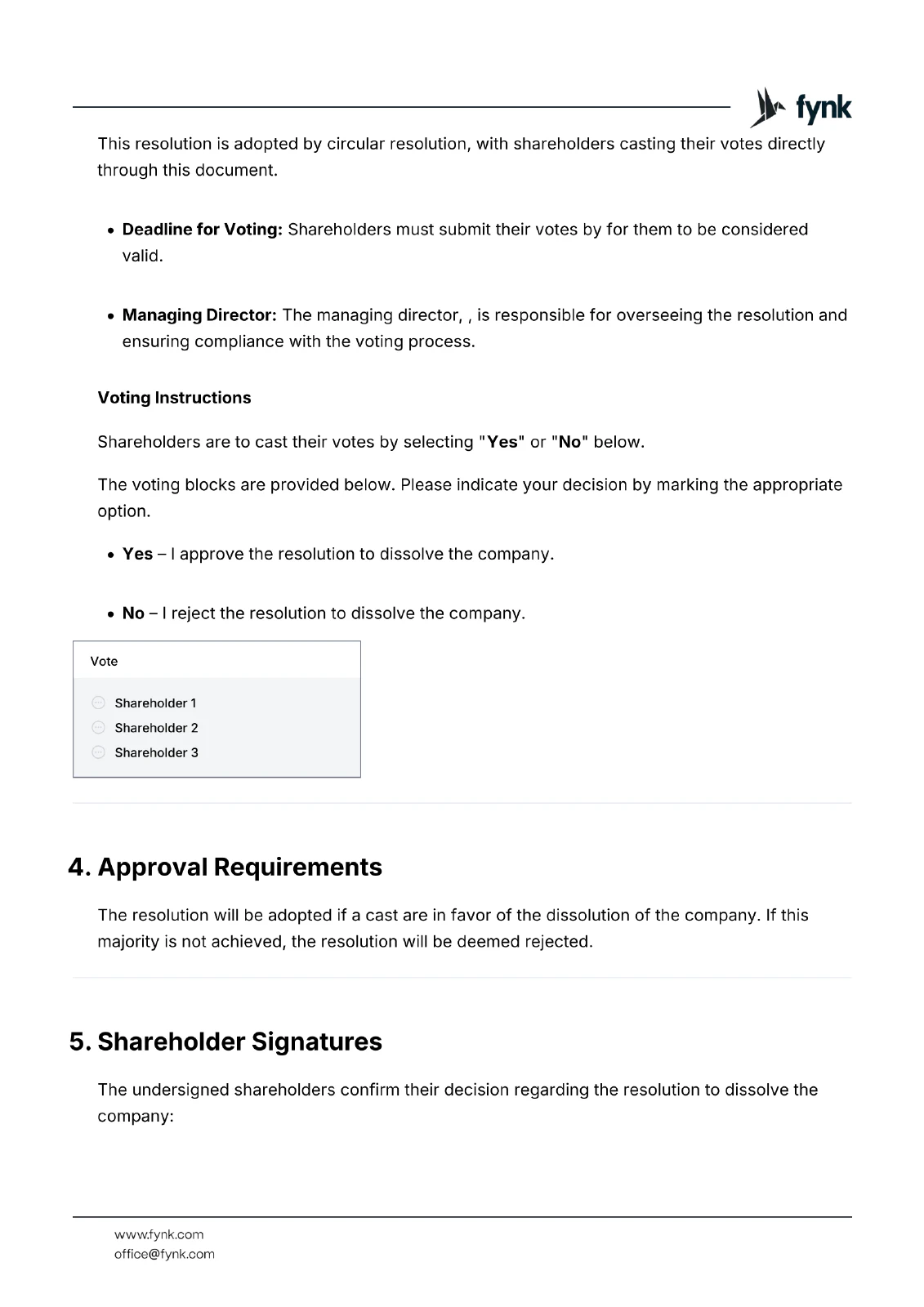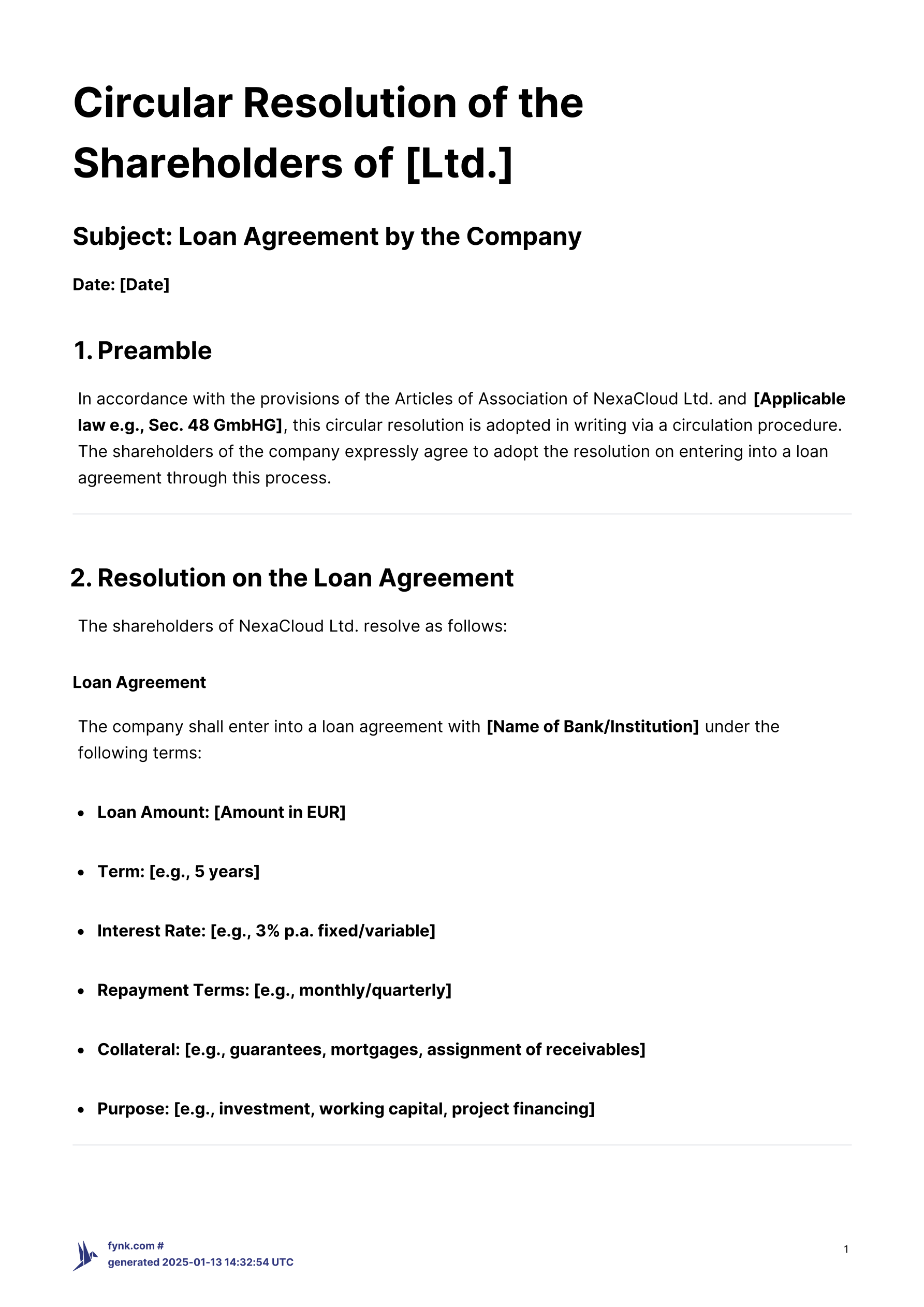Learn everything there is about circular resolution for dissolution of a Ltd. What they are, when to use them for and what they should contain.
What is a Circular Resolution to Dissolve a Ltd?
A circular resolution to dissolve a Ltd (limited company) is a way for shareholders to make the decision to dissolve the company without the need for a physical meeting. This resolution is typically used when the shareholders unanimously agree to wind up the business. By using this method, you can save time and quickly reach a decision that needs immediate attention, such as when you are closing down a company for strategic reasons or due to financial challenges.
Once the dissolution is agreed upon, the company enters the liquidation phase. During this process, you’ll need to settle any outstanding debts, distribute assets, and handle any remaining administrative tasks. This typically involves appointing a liquidator to manage the process and make sure everything is done properly. The liquidation process may also require another resolution by the shareholders, which can also be done through circular resolution.
Advantages of a Circular Resolution for Dissolution
First and foremost, circular resolutions are faster—no need to schedule a meeting or wait for everyone to be available. You can get the decision made quickly and efficiently, saving valuable time. It also reduces the need for travel and logistical coordination, especially when shareholders are in different locations. Plus, it’s less formal, making the whole process feel simpler while still maintaining legal compliance. If you need to dissolve your GmbH in a timely manner, this method is an excellent choice.
Another benefit of using a circular resolution for dissolution is that it creates clear documentation of the entire decision-making process. You’ll have a record of the resolution, the votes, and any related agreements. This is essential for legal purposes, as it shows that the dissolution was handled according to company laws.
Legal Requirements for Dissolving a GmbH Using Circular Resolution
Dissolving a GmbH is mentioned in § 60 of GmbHG (Germany) under Grounds for dissolution. The second ground of dissolving a company based on this law clearly states:
🇩🇪 Germany: “The limited liability company shall be dissolved: 2nd. by resolution of the shareholders; unless otherwise provided in the partnership agreement, this requires a majority of three-quarters of the votes cast.”
Moreover, based on § 48 of GmbHG this resolution can be done using circular resolution if the members agree to such method in writing.
❗Important: Based on the § 84 GmbHG in Austria, “The limited liability company shall be dissolved: 2nd. by resolution of the shareholders, which requires notarial certification.” As stated, the minutes of the meeting shall be drawn up by a notary. Therefore, you would not be able to use a circular resolution for dissolving a GmbH in Austria unless the notarial certification process (even online) is explicitly included.
Circular Resolution Template for Dissolution
Our “Circular Resolution for Dissolution of Ltd” template is designed to make the process of dissolving your GmbH straightforward and legally compliant. It covers everything you need, from shareholder approval to key details of the dissolution.
Why Using fynk Templates?
- Secure Voting and Signing: Your vote and electronic signatures are encrypted and protected from any unauthorized changes.
- Real-Time Notifications: Automatic notifications send real-time updates about the shareholder’s voting and signing process.
- Easy Sharing and Collaboration: Share the resolution template with stakeholders effortlessly, so that they can review and and access the proposal from any location.
- Time-Saving: Eliminating the need for physical meetings or back-and-forth emails to save time and effort.
- Compliance Assurance: Stay compliant with legal requirements by using a template that’s structured according to GmbHG regulations.
Can a Circular Resolution Be Used for Decisions Other Than Dissolving a Company?
Absolutely! You can use a circular resolution for a variety of important decisions, as long as all members agree to use it. Annual financial statements, decisions on the appropriation of the annual surplus, appointment or dismissal of board members, or resolutions on a special contract are some of the use cases of circular resolutions.
FAQs
- Is the circular resolution legally binding?
- Yes, as long as it meets the legal requirements—unanimous shareholder approval in writing—it’s legally binding and triggers the dissolution process.
- How long does the dissolution process take after passing the circular resolution?
- The dissolution process can vary depending on the complexity of the company’s affairs, but once the resolution is passed, it typically takes several months to complete the liquidation and finalize the closure.
Shareholder 1
Shareholder 2
Shareholder 3








